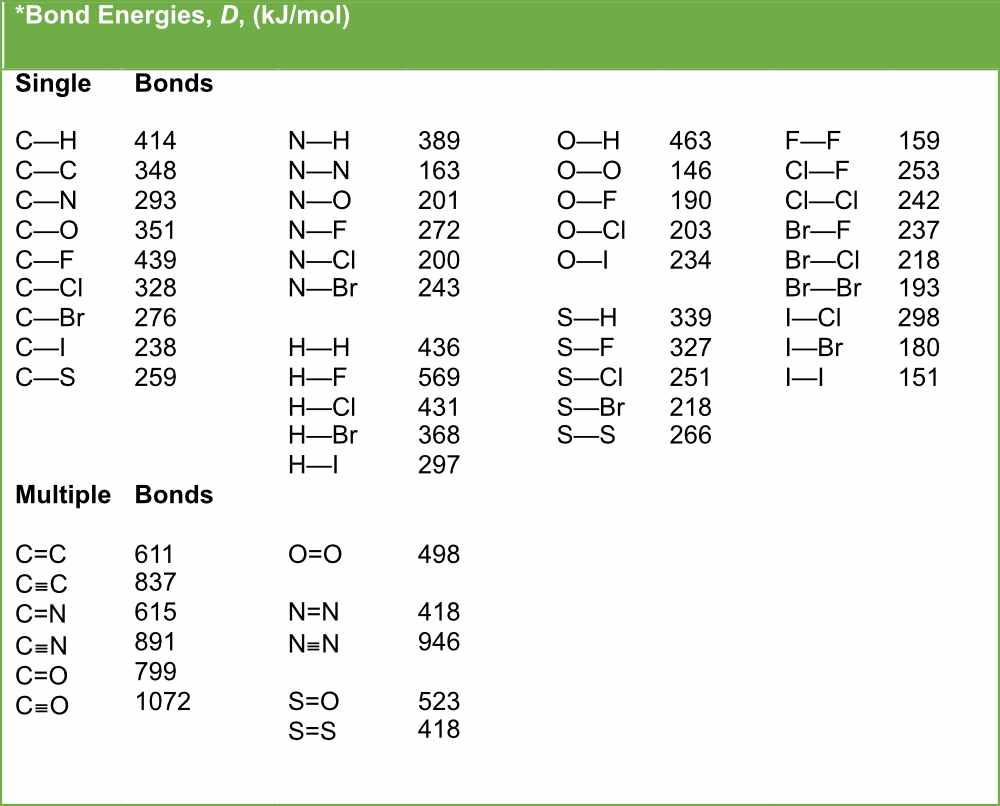Solutions/Answers to Exercises
Exercise 1. Use the bond energies from the table to calculate an approximate ΔH0rxn for the following equation:
2 NH3 (g) + Cl2 (g) → N2H4 (g) + 2 HCl (g)
Draw structures of the reactants and products.
Look up the average bond dissociation energies for N–H, Cl–Cl, N–N, H–Cl, and N–H.
For the reactants we have
6 moles N–H x 389 kJ/mol = 2334 kJ
1 mole Cl–Cl x 242 kJ/mol = 242 kJ
D(reactants) = 2334 kJ + 242 kJ = 2576 kJ
For the products we have
4 mole N–H x 389 kJ/mol = 1556 kJ/mol
1 mole N–N x 163 kJ/mol = 163 kJ/mol
2 mole H–Cl x 431 kJ/mol = 862 kJ/mol
D(products) = 1556 kJ + 163 kJ + 862 kJ = 2581 kJ
ΔH0rxn = 2576 kJ – 2581 kJ = -5 kJ
Exercise 2. Calculate the heat of combustion, for C2H6 using the bond dissociation energies in the table. (Assume complete combustion)
First write a balanced chemical equation:
2 C2H6 (g) + 7 O2 (g) → 4 CO2 (g) + 6 H2O (g)
Draw the structures of the reactants and products so you can calculate the number of each type of bond.
There are 2 moles of C–C bonds, 12 moles of C–H bonds, and 7 moles of O=O bonds in the reactants. There are 8 moles of C=O bonds and 12 moles of O–H bonds for the products. Look up the bond energies and multiply by the number of moles of each type of bond.
D(reactants) = 2 moles C–C x 348 kJ/mole + 12 moles C–H x 414 kJ/mol + 7 moles O=O x 498 kJ/mol = 9150 kJ
D(products) = 8 moles C=O x 799 kJ/mol + 12 moles O–H x 463 kJ/mol = 11948 kJ
ΔHrxn = 9150 kJ – 11948 kJ = -2798 kJ



